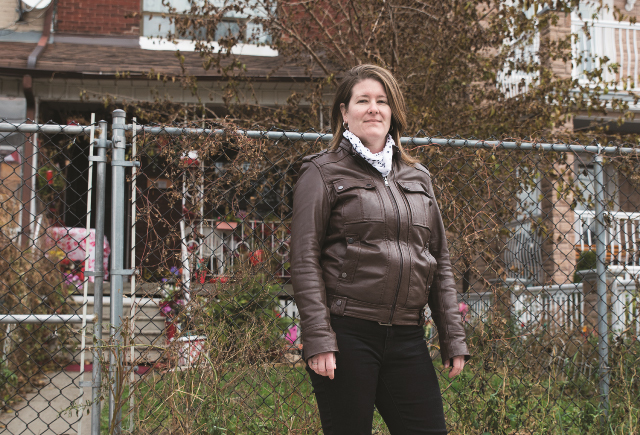PART 2 OF 3
Emergencies can strike at any time. Jarring, chaotic and often life-threatening, they startle the senses and send adrenaline soaring. In this three-part series, you will meet three registered nurses and one nurse practitioner whose peaceful off-hours were catapulted into frenzied encounters on planes, in quiet living rooms, and even in a community bar. These nurses jumped into action without hesitation.
By Kimberley Kearsey
Part 2: Calm walk home takes traumatic turn
It was a Thursday afternoon in June 2015, and Natalie Speirs, an RN in the emergency department at Toronto’s Mount Sinai Hospital, had just finished teaching a course to undergraduate nursing students at University of Toronto. She was tired, and although her bus was waiting at the TTC station when she arrived, she decided not to get on. Instead, Speirs began walking home, enjoying the fresh air on a pleasant afternoon. As she rounded a corner close to her condo, she saw a frantic woman in her PJs and without shoes darting out into the road on her cell phone. She was looking up and down the street, screaming about an ambulance. “I immediately thought she must be on a call with 911,” Speirs recalls. “I was across the street, so I ran over to her and said: ‘I’m a nurse. What’s going on? Can I help you?’”
The woman’s one-year-old daughter was inside with her grandmother, choking on what turned out to be a hair clip. Speirs ran with the woman into the house and saw the grandmother on her knees with the little girl upside-down. “I literally took the baby from her and I crouched down on one knee. I put her over the other knee and started doing back blows.” Speirs did two or three blows and heard the baby cry, but nothing fell from her mouth. “I sat her up on my knee and she started to drool again and not make a noise (indicating she still had something blocking her airway). At this point the paramedics showed up and they took her from me and ran to the truck to suction and do what they needed to do. It was all very quick,” Speirs says.
With seven years of emergency nursing under her belt, Speirs looks back at the sudden and very chaotic situation and knows she was able to manage her adrenaline and remain calm thanks to her experience in the ER. She admits, however, that her expertise is with adult patients. “When (the mother) said to me that her one-year-old was choking, I will always remember my first thought being: ‘Oh God, I wish it was an adult,’” she says with a laugh.
It was a “dazed” walk home after that, Speirs adds. With the baby’s drool dried up on her arm, she arrived at her condo and told her partner what happened. She was exhausted and took a nap. “I don’t know that it resonated how important it was that I stopped because I was able to sleep and then, when I woke up and started talking about it more, I realized: ‘Wow…that was kind of crazy.’ Thank God I ran over to help this woman because the other outcome…you can’t even imagine.”
It’s not the first time this Toronto RN has found herself running towards an emergency during off hours. She heard screaming in a parking garage once, and ran to find a woman whose car was stolen by a man who tried to stab her with a pair of scissors. In that case, Speirs was called to testify as a witness. She says she has “…this compulsion that if someone is (frantic), they obviously need help. Why not see if there’s some way I can help them?
“I think about nursing as a profession for sure, but it takes a certain type of person to be a nurse,” Speirs continues. “There are going to be experiences that come up when you’re not in a hospital setting. You could be….out in public like I was, and if people need help, for me, I don’t turn a blind eye. There’s a reason I went into nursing. It’s part of who I am.”
Kimberley Kearsey is managing editor/communications project manager for RNAO
This article was originally published in the November/December 2016 issue of Registered Nurse Journal, the bi-monthly publication of the Registered Nurses’ Association of Ontario (RNAO)., the professional association representing registered nurses, nurse practitioners, and nursing students in Ontario. Since 1925, RNAO has advocated for healthy public policy, promoted excellence in nursing practice, increased nurses’ contribution to shaping the health-care system, and influenced decisions that affect nurses and the public they serve. For more information about RNAO, visit RNAO.ca or follow us on Facebook and Twitter.


